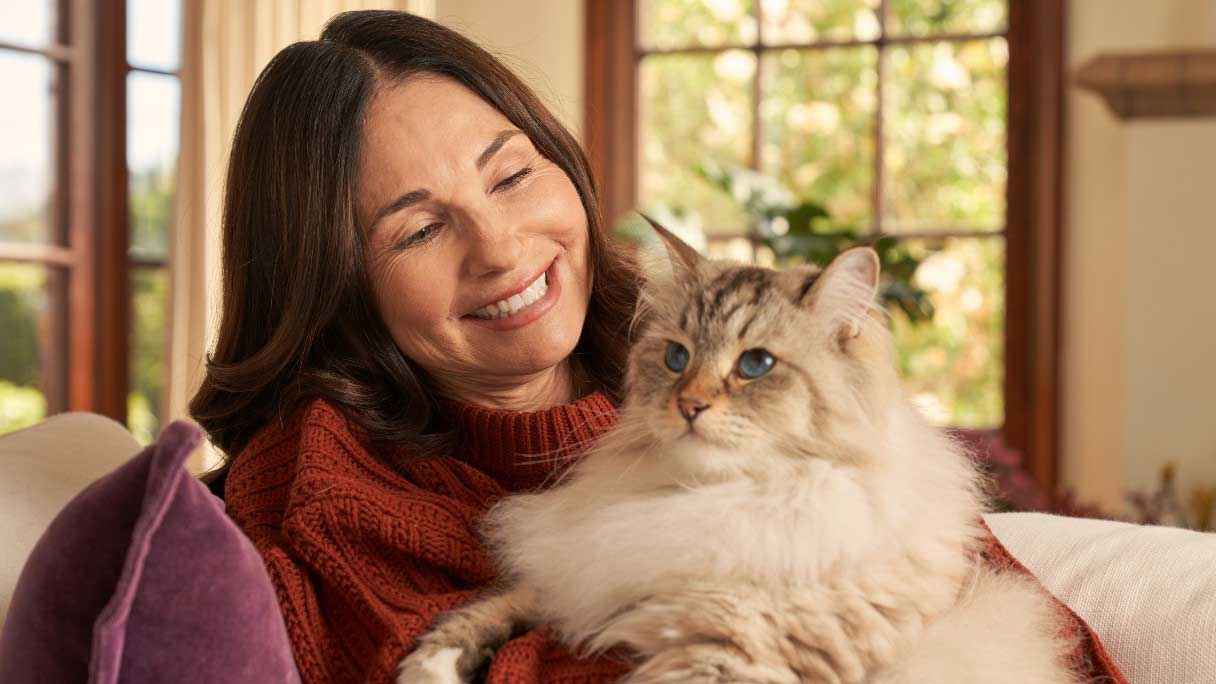Visits to the veterinarian can be a harrowing and anxiety-inducing experience for your pet. The fear free movement aims to change that by making veterinary appointments and hospitalization as stress-free as possible for your furry friend.
What is fear free? It's a set of practices designed to put your pet at ease during visits to the vet. Veterinary offices and veterinary professionals certified in fear free practices know just how to keep pets calm to not only make the pets better patients but to improve their care and speed their healing. And these revolutionary new recommendations help add a caring attitude into the medical care for our pets.
What is Fear Free?
Started by well-known veterinarian and proponent of the human-animal bond, Dr. Marty Becker, the fear free movement educates pet professionals in a series of gentle and calming pet care techniques during visits.1 The main aim of the fear free movement is to incorporate a pet's emotional well-being while at the vet in a way that hasn't been done in the past.
How Does the Fear Free Movement Help Pets?
While visits to the vet can be scary for cats and dogs, fear free veterinary care can make visits more enjoyable for the pets—and you too. During visits, the vet and other team members will take steps to alleviate your pet's stress like:
- Playing calming classical music or white noise in the office.
- Playing cat- or dog-specific videos in exam rooms or waiting rooms for pets.
- Speaking in soft and gentle voices around pets.
- Not wearing strong perfumes that may upset pets.
- Wiping down surfaces frequently to remove the scent of other pets.
- Using calming pheromone sprays and diffusers throughout the office.
- Handling pets gently.
- Placing pets on non-slip or padded surfaces.
- Keeping different types of pets, like cats and dogs, in separate waiting rooms and in hospital boarding kennel areas.2
What Makes Pets Fearful and Anxious?
Fear in pets is an emotion that comes from the perception of danger. Meeting new people or visiting a new location, like a groomer or a vet's office, is sometimes perceived as dangerous to pets, even when it actually isn't. This is especially true if previous veterinary visits were unpleasant.3
Stress is a state of emotional strain caused by unpleasant or demanding circumstances, usually as a result of fear. Fear and agitation also cause anxiety.4 Anxiety basically puts your pet on high alert that something terrible or dangerous is coming, making them more reactive and aggressive than usual.
How Fear, Stress and Anxiety Negatively Affect Your Pet
Not only do reactive, aggressive pets make bad patients who are hard to diagnose and treat properly, but when pets are under stress, it can negatively affect their health.5 In fact, some studies have shown that continuous stress can even decrease your dog's lifespan.6
"Cortisol, a hormone that is released during stress, can inhibit the immune system, especially if that stress is chronic such as during repeat trips to the vet or hospitalization," says veterinarian Dr. Chyrle Bonk.7 She also notes that stress can cause diarrhea, changes in urination, and slow the healing process in sick pets.
How Do Veterinarians Combat Anxiety With the Fear Free Movement?
During veterinary visits, doctors and staff watch pets for signs of stress so that they can adjust how they are interacting with them. To put them at ease, they may brush pets or give them tasty treats and toys while they are examining them, giving them their vaccines, or during potentially painful procedures like blood draws.8
Veterinary offices are also altered for the comfort of the pets. "That means getting rid of the fluorescent lights, slippery floors, and exam tables that pets have to be lifted onto," says Dr. Bonk.7 Instead, vets examine large dogs on a floor mat and offices are fitted with tables that rise when pets step up on them, she says.
Fear free vets may use sedation, comforting wraps, or anti-anxiety medications in extremely agitated pets in addition to calming pheromone diffusers throughout the office.9 "Another big one is to encourage social visits where pets come in for treats and attention rather than medical reasons so that they don't always associate the veterinary clinic with the poking and prodding of a medical exam," says Dr. Bonk.7
Fear Free Veterinary Certification
Beginning in 2016, Fear Free®, LLC, in partnership with the American Veterinary Medical Association, began certifying veterinarians, veterinary nurses and technicians, practice managers, customer service people, and other pet professionals through an online course.10
Pet owners looking to find a fear free certified veterinary practice or practitioner can find a list of members on the Fear Free website.11 Note that you can only search for fear free vets by your location.
Your pets will need vet care throughout their lifetime, so why not make these visits as pleasant as possible for them? Look for veterinarians and practices who utilize fear free techniques for all of your pet's medical needs.
CareCredit Financing for Pets
Remember that the CareCredit credit card is an easy way to pay for the vet exams and treatments your pet needs at participating fear free certified veterinary locations nationwide.* Use the Acceptance Locator or download the CareCredit Mobile App to find a provider or retailer near you that accepts CareCredit.
Author Bio
Susan Paretts is a freelance writer with 18 years of experience covering health and wellness, pet care, and more. Her work has been published by the American Kennel Club, Bayer Animal Health, Elanco, LIVESTRONG.com, The San Francisco Chronicle, Chewy, and more.







